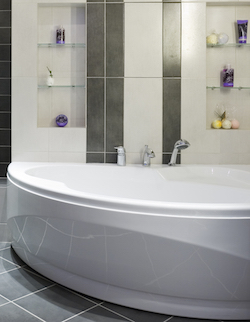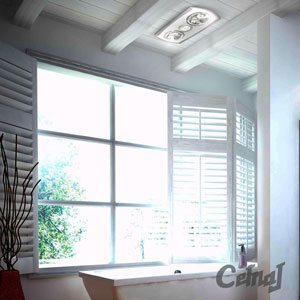How to Choose a Bathroom Exhaust Fan

When the winter months hit and our showers get steamier and steamier, it’s the prime time to make sure your bathroom exhaust fan is working the best it can. It’s also definitely the time to ensure you have a bathroom exhaust fan - you might be doing some bad damage to your house if you don’t have one!
During the humid months, these fans come in just as handy and necessary as in winter, so it’s an investment that will make it’s money back over and over. You might not see where the money is going, but believe me, you don’t want to be paying for mould and mildew damages when all that humidity and steam builds up in your ceiling and walls. Here are some tips that will help you to buy a bathroom exhaust fan, and to make sure the one you may have is up to the task.
Even if you have a window in the bathroom, you still need an exhaust fan to make sure that moisture, odours, and possible mould spores are removed from the air and exhausted outside your house.
- If you’re worried about losing heat in your room, you can get ones with heaters and heat lights built in to to counteract the warm air being cycled out of the room.
-
The options you can choose from include singular exhausts fans, fans with lights, and fans with heat and lights. These are commonly known as bathroom 3 in 1s.
- The capacity of an exhaust fan to clear air from the room is measured in cubic metres per hour (m3/h). To calculate what m3/h you need, you’ll first need to see what room size you have. Multiply the length, width, and height of your room (LxWxH), then multiply that number by the number of air changes per hour you require - this is generally around 10 for a toilet room, or 15-20 for a bathroom with a shower or tub. Increase the air changes per hour if you like really steamy showers to 20-25.
- Once you have the final number, you can look for exhaust fans with that particular m3/h rating, or as similar as available.
| Exhaust Fan Capacity = room size (LxWxH) times the air changes per hour (minimum 10, or as many as needed for your room) |
-
If you plan to put a fan quite close to the shower or tub, it will need to have an IPX rating of at least 4 to make sure it is waterproof enough to run properly in that proximity to the water and dense steam.
- The best position for an exhaust fan is directly opposite the source of incoming air into the room - this is most likely a window or a door. Putting the fan across from the air flowing in will create a cross-breeze that pulls more air out of the room - if the fan is too close to the point of ingress for air, it may not be as effective at removing the offending air.
- The noise level of exhaust fans will depend on the brand and how powerful they are. Ones that are less noisy will generally be more expensive, though.




